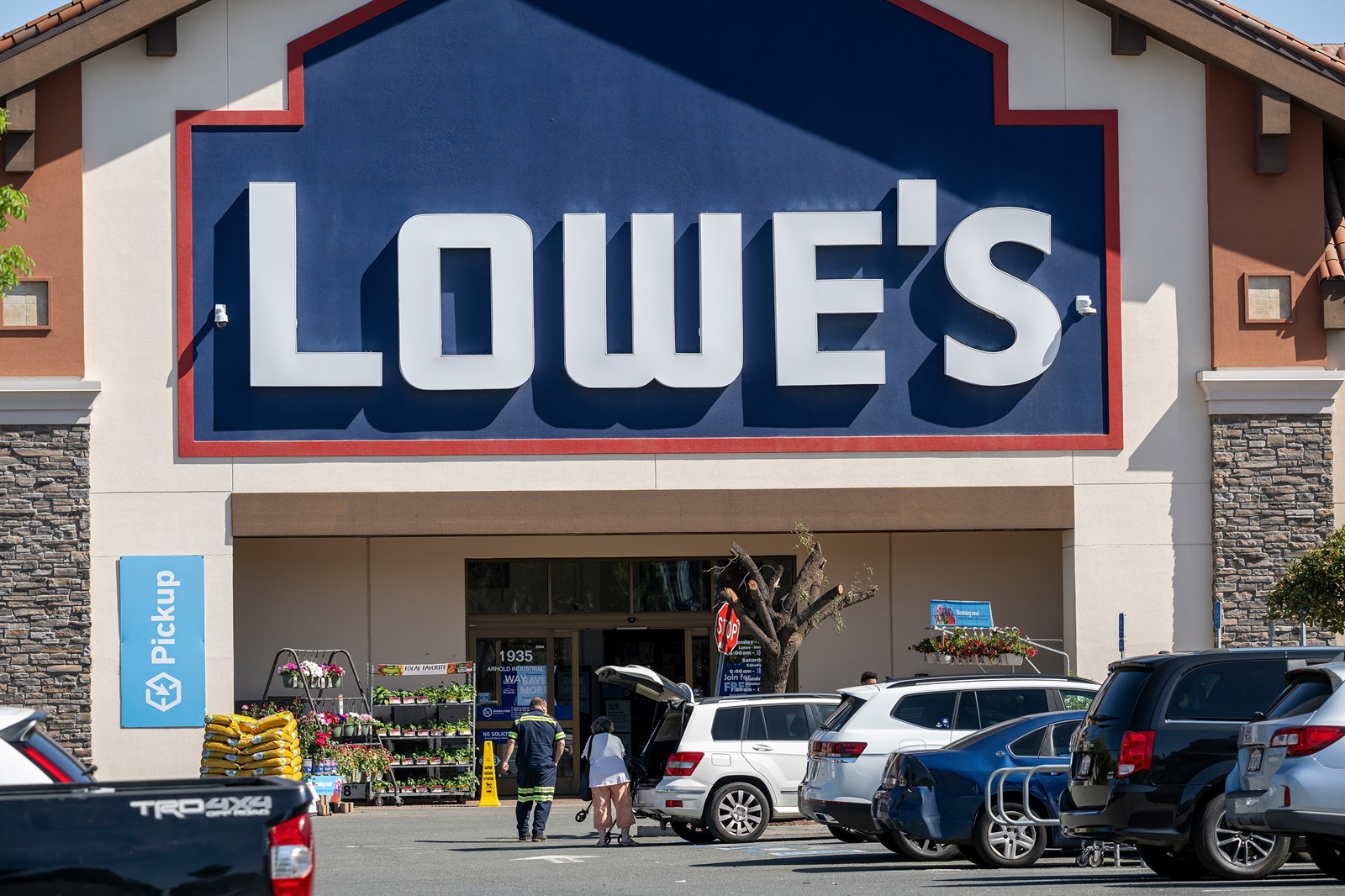Lowe’s Cos. comparable sales beat expectations during the latest quarter as shoppers maintained home spending despite weakening consumer sentiment and economic turbulence.
The home-improvement retailer said its comparable sales dipped 1.7% in the quarter that ended May 2, but it still expects the key sales metric to be flat to up to 1% in the current year.
The shares slipped 1.6% at 9:45 a.m. in New York trading Wednesday. Lowe’s stock declined 6.3% for the year through Tuesday’s close, lagging the S&P 500 index.
The comparable sales decrease came amid poor weather in February, along with continued pressure on the retailer’s higher-cost discretionary sales and do-it-yourself business, Chief Executive Officer Marvin Ellison said on the company’s earnings call. The decrease was offset in part by growth in online sales and the firm’s Pro business, which caters to home-improvement contractors.
Results of Lowe’s and its main competitor Home Depot Inc. suggest that US consumers have yet to curtail or make major changes to their home spending despite economic turbulence. Many continue to defer big projects due to high interest rates, but they’re pursuing smaller ones. That has helped companies post results that are roughly in line or better than Wall Street expectations.
At Lowe’s, customers are delaying “bigger-ticket” spending, such as bathroom and kitchen renovations and new flooring, said Bill Boltz, executive vice president of merchandising.
The worst economic scenarios appear to have passed, Home Depot executives said Tuesday, and the company expects to generally keep prices stable thanks to its diversified supply chain. Spending has remained steady, and there was limited tariff-fueled stockpiling.
Ellison said Lowe’s will remain competitive on prices and will work with suppliers to manage the cost of merchandise.
President Donald Trump’s fast-changing tariffs are creating challenges across the sector. Prices are expected to rise, while consumer sentiment has weakened in recent weeks on fears of economic fallout from the levies. The home category is vulnerable to tariffs because many products are sourced from overseas. Those products also tend to be discretionary, meaning demand is closely connected to prices.
Lowe’s sources about 20% of its purchases from China, Ellison said, though the company is working to diversify its supply chain. Roughly 60% of the company’s purchases come from the US — totaling around $30 billion annually.
Walmart Inc., the world’s largest retailer, cautioned last week that shoppers would see tariff-driven price increases soon. The company indicated that it would be surgical about those changes, noting that there could be greater degrees of uncertainty in the months ahead. That sparked the ire of Trump, who said the retailer should “eat the tariffs.” In response, Walmart said that it has kept prices as low as possible and would continue to do so.
During the ongoing slowdown in the US housing market, Lowe’s has focused on boosting offerings for professional contractors and investing across its online business.
“We’ve yet to see at scale, really, the consumer engage in larger discretionary categories,” Lowe’s Chief Financial Officer Brandon Sink said. “The affordability challenge remained the primary concern,” he added.



 PREVIOUS ARTICLE
PREVIOUS ARTICLE
